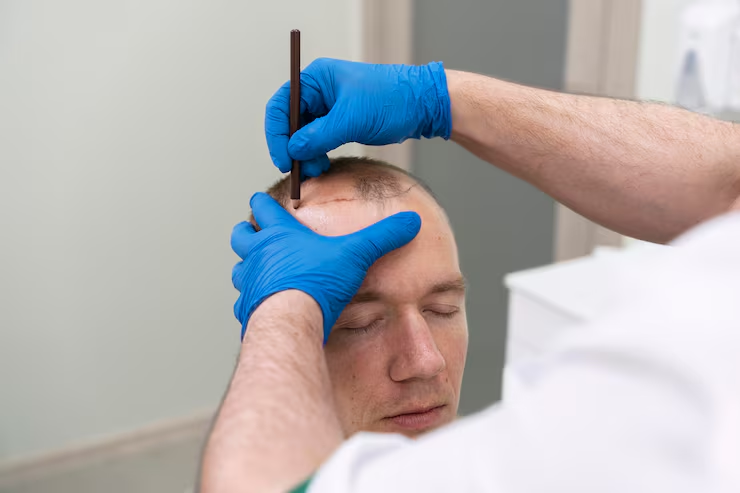Hair loss can affect both men and women, impacting self-confidence and overall appearance. With advancements in cosmetic treatments, hair transplant procedures have become one of the most effective solutions for restoring natural hair growth. Whether you are considering a hair transplant for men or a female hairline transplant, understanding how the procedure works, its benefits, and what to expect before, during, and after surgery is essential for achieving the best possible results.
This guide provides an in-depth overview of what patients should know before undergoing a hair transplant, helping you make an informed decision.
Understanding Hair Transplant Procedures
A hair transplant involves transferring healthy hair follicles from a donor area—typically the back or sides of the scalp—to areas affected by thinning or baldness. Two of the most common techniques are:
- FUE (Follicular Unit Extraction): Involves extracting individual follicles and implanting them into thinning areas. It is minimally invasive, leaves minimal scarring, and offers a quicker recovery time.
- FUT (Follicular Unit Transplantation): Involves removing a strip of scalp from the donor area, extracting follicles, and transplanting them. It is more suitable for patients requiring a larger number of grafts.
Both techniques are widely used for hair transplant procedures for men and female hairline transplants, with the choice depending on the patient’s goals, hair type, and extent of hair loss.
Who Can Benefit from a Hair Transplant
Hair transplants are suitable for individuals experiencing different types of hair loss, including:
- Male pattern baldness – A common cause of thinning and bald spots in men.
- Receding hairlines – Can be addressed through procedures like a female hairline transplant for those seeking a more balanced, youthful appearance.
- Hair thinning due to ageing or hormonal changes.
- Scarring from injuries or previous surgeries.
- Eyebrow, beard, or sideburn restoration in specific cases.
However, not everyone is an ideal candidate. A thorough assessment by a qualified specialist is necessary to determine if you have enough healthy donor hair and to evaluate your scalp’s condition.
Preparing for a Hair Transplant Procedure
Before undergoing a hair transplant for men or a female hairline transplant, preparation plays a vital role in ensuring successful results.
1. Consultation and Assessment
Your journey begins with a detailed consultation where the surgeon examines your scalp, discusses your goals, and recommends the most suitable technique based on your hair loss pattern.
2. Pre-Procedure Guidelines
Patients are often advised to:
- Avoid alcohol and smoking for at least a week before surgery.
- Stop certain medications, such as blood thinners, if recommended by your doctor.
- Keep the scalp clean and free from products on the day of the procedure.
3. Setting Realistic Expectations
A hair transplant enhances hair density and restores natural growth patterns, but results vary based on hair type, thickness, and the degree of hair loss. Full results often take 9 to 12 months to become visible.
Hair Transplant for Men
Hair transplants for men are commonly performed to address receding hairlines, thinning crowns, and complete bald spots caused by male pattern baldness. Most men opt for FUE transplants due to their minimally invasive nature and natural-looking results.
Benefits include:
- Permanent restoration of natural hair growth.
- Improved hairline density and shape.
- Minimal scarring and downtime.
For men with extensive hair loss, FUT may sometimes be recommended as it allows transplantation of a larger number of follicles in one session.
Female Hairline Transplant
Unlike men, women often experience diffuse thinning rather than complete bald spots. A female hairline transplant is designed to lower or reshape the hairline, increase density, and restore volume to thinning areas.
Key advantages include:
- Customisation of hairline shape for a balanced facial appearance.
- Natural integration of transplanted follicles for seamless results.
- Permanent improvement in fullness and thickness.
Since women typically retain more donor hair, results can be highly effective when planned carefully by an experienced surgeon.
Recovery After a Hair Transplant
The recovery timeline for both hair transplants for men and female hairline transplants is relatively short, but following aftercare instructions is essential:
- First Few Days: Mild swelling, redness, and tenderness are common but temporary.
- Week 1: Tiny scabs form around transplanted follicles, which naturally fall off.
- Weeks 2 to 4: Some shedding of transplanted hair occurs—this is normal as new growth begins beneath the skin.
- Months 3 to 6: Visible hair growth gradually starts, improving overall density.
- Months 9 to 12: Final results typically become noticeable, with thicker, natural-looking hair.
Choosing the Right Clinic and Surgeon
The success of your procedure largely depends on selecting the right clinic and surgeon. When researching options, look for:
- Experience and Credentials: Choose a qualified specialist who regularly performs hair transplants for men and female hairline transplants.
- Before-and-After Results: Reviewing real patient cases helps assess the quality of work.
- Advanced Technology: Clinics using modern techniques like FUE achieve better precision and natural outcomes.
- Transparent Consultations: A good clinic explains the procedure, potential risks, costs, and expected results clearly.
Final Thoughts
Whether you are considering a hair transplant for men to address thinning and bald spots or a female hairline transplant to restore a natural-looking hairline, understanding the procedure and setting realistic expectations is key. These treatments provide long-lasting results and can significantly boost confidence when performed by an experienced specialist.
If you are planning to undergo a hair transplant, consulting a qualified hair restoration expert will help determine the most effective approach for your individual needs.
